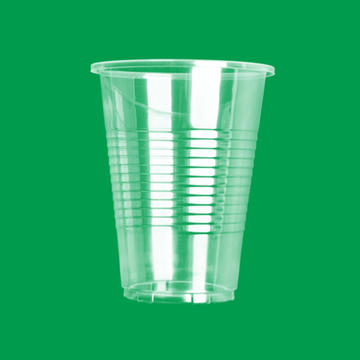Disposable Euro microwaveable containers are widely used across various sectors including households, catering services, and takeaway businesses, due to their convenience, hygiene, and ability to withstand microwave heating. The materials used in these containers are crucial for their performance, safety, and environmental impact. This article will explore the primary materials used in Disposable Euro microwaveable containers, detailing their characteristics, advantages, and applicable scenarios.
Polypropylene (PP) — The Primary Material
Polypropylene (PP) is one of the most commonly used materials in disposable Euro microwaveable containers. PP is a plastic known for its excellent heat resistance and cold tolerance, which makes it ideal for microwave applications. With a melting point of around 160°C, PP can withstand the typical microwave heating temperatures, which usually range around 100°C, without deforming.
One of the key features of PP is its chemical resistance. It is highly resistant to food oils, acids, and alkaline substances, ensuring that it does not react with the contents of the container or release harmful substances during heating. Additionally, PP has low moisture permeability and high impact resistance, which enhances the container's durability during both storage and heating processes.
Polyester (PET) — Clear and Strong
Polyester (PET) is another common material used in some disposable microwaveable containers, especially those requiring higher clarity and strength. Compared to PP, PET has slightly lower heat resistance, typically suitable for microwave heating at temperatures not exceeding 120°C.
PET's main advantage is its excellent transparency, which allows consumers to clearly see the contents of the container. This is particularly useful for retail and takeaway packaging, where visual appeal is important. In addition to being lightweight, PET containers also have excellent compressive strength, preventing deformation during transportation and stacking.
Although PET's heat resistance is not as high as PP, it still performs well in microwave applications for foods that require short heating times. PET containers are best suited for ready-to-eat meals or cold food packaging, where visual presentation is a key factor.
High-Density Polyethylene (HDPE) — Durability at Low Temperatures
High-Density Polyethylene (HDPE) is used in certain disposable microwaveable containers, particularly in cold food packaging. HDPE is known for its excellent chemical resistance and UV protection, making it a durable option for storing and transporting a wide range of food items. While HDPE’s heat resistance is slightly lower than PP, it excels in low-temperature environments, maintaining its integrity at freezing temperatures.
However, HDPE's performance in microwave heating is less ideal compared to PP. Due to its lower heat tolerance, HDPE containers can soften or warp when exposed to high temperatures in the microwave, limiting their suitability for long-term heating. HDPE containers are best used for short-duration heating or cold food storage, rather than for sustained high-temperature microwave use.
Polystyrene (PS) — Economic and Transparent
Polystyrene (PS) is an economical plastic commonly used in some disposable microwaveable containers. While PS offers high transparency, allowing consumers to easily view the contents, its heat resistance is relatively poor compared to PP or PET. Prolonged exposure to high temperatures in the microwave can cause PS containers to deform or even crack.
Due to its lower heat stability, PS is generally not suitable for long microwave heating times. It is typically used for containers that are designed for short-term heating or cold storage. In the takeaway and fast food sectors, PS containers are often used for packaging items that do not require extended heating in the microwave.
Polyvinyl Chloride (PVC) — Limited Use
Polyvinyl Chloride (PVC) has historically been used in some disposable containers, but it is now less common in microwaveable containers. PVC's heat stability is not sufficient for safe microwave use, as it can release harmful substances, such as chlorine, when exposed to high temperatures.
Although PVC has good impact resistance and mechanical strength at low temperatures, its tendency to release hazardous chemicals when heated makes it an unsuitable choice for microwave applications. As a result, PVC is gradually being phased out of the market for microwaveable food containers, with safer alternatives like PP and PET taking its place.
Composite Materials and Coatings
In order to enhance the functionality and usability of disposable microwaveable containers, some manufacturers incorporate composite materials or special coatings. For example, some containers feature aluminum foil layers to improve heat insulation and prevent leakage. This design helps contain oils or liquids, preventing them from seeping through the container walls, and also retains heat more effectively during heating.
Additionally, some high-end containers may use paper-based composite materials. These containers, while not as heat-resistant as plastic containers, are increasingly being used for environmentally-conscious packaging. Although these paper composite containers are not ideal for high-temperature microwave heating, they provide a more sustainable option for environmentally-conscious consumers.
Eco-Friendly Materials — A Growing Trend
As consumer awareness about environmental issues increases, there is a growing demand for eco-friendly materials in disposable containers. Biodegradable plastics, PLA (Polylactic Acid), and PHA (Polyhydroxyalkanoates) are emerging as alternatives to traditional plastic materials. These materials not only meet food safety standards but also help reduce the environmental impact of disposable products.
Eco-friendly materials are particularly attractive to consumers and businesses focusing on sustainability. While these materials can be more expensive than conventional plastics, they offer a more sustainable solution by being biodegradable or recyclable. As more brands adopt green packaging, eco-friendly disposable containers are becoming an increasingly popular choice, especially in sectors where environmental responsibility is a priority.

 English
English 中文简体
中文简体



















